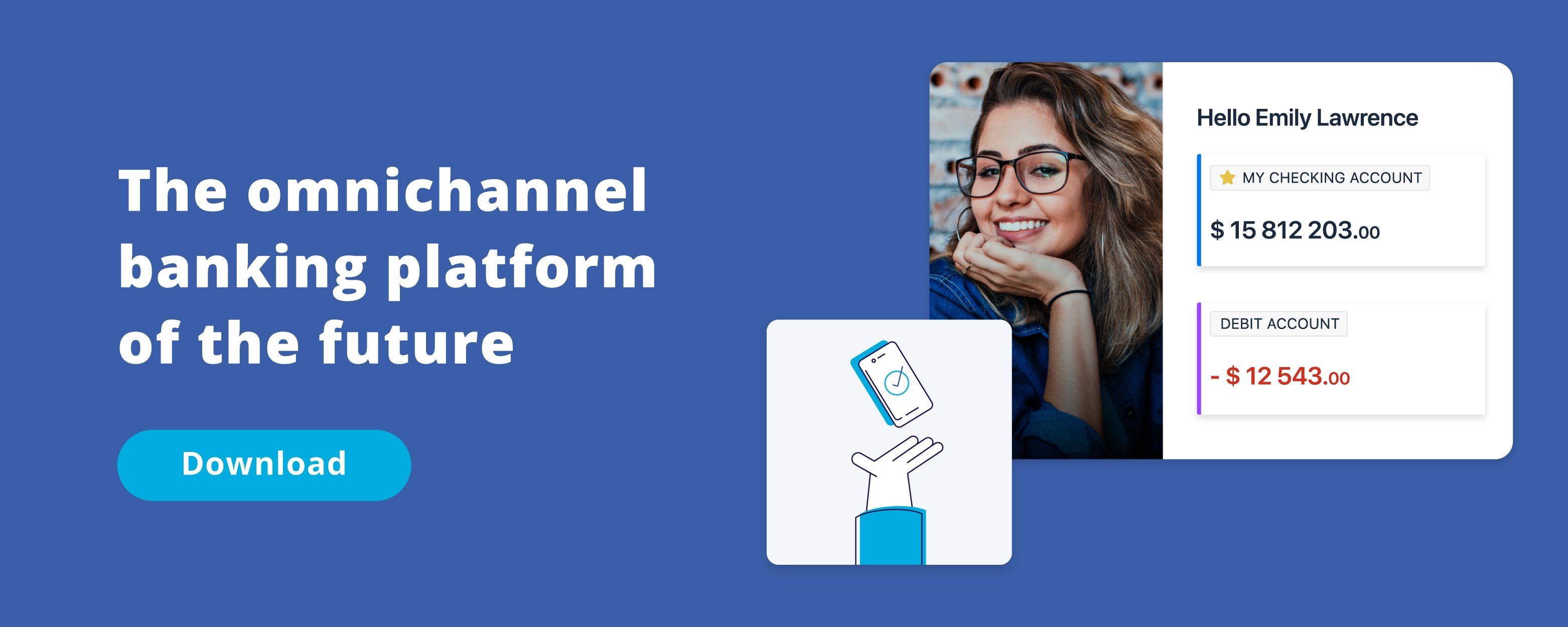Top priorities for US banking executives to focus on through 2027
In the dynamic US financial services realm, community banks and credit unions stand at the brink of vast opportunities that await unlocking through cutting-edge technologies. These institutions hold a strategic edge grounded in consumer trust and loyalty, fostered by their competitive offerings, personalized approach, and easy accessibility.
The technology decisions and investments that community banks and credit unions make over the next 12-18 months may determine how well they can compete against the mega banks, agile fintechs, and the emerging competitive threat posed by big tech companies.
ebankIT offers invaluable guidance for American banking leaders in this new report: "Outlook 2027: US Banking and Credit Union Digital Transformation Priorities". Discover practical strategies to assist leaders in navigating the complexities and obstacles to sustain competitiveness in the ever-changing financial environment.
The revival of the bank branch and its new role
Since the 2020-2021 pandemic, community banks and credit unions have prioritized digital transformation. A Forbes poll in 2022 revealed that 78% of consumers now prefer mobile or online banking, while just 29% prefer in-person banking. Despite this shift, access to a branch remains important to customers, ranking in their top three features.
While traditional bank branches were once the main way to reach customers, digital banking offers a cheaper and more scalable solution. Digital platforms can be easily upgraded, allowing for automation and faster product innovation compared to physical branches.
In this era of digital transformation, community banks, and credit unions must question the relevance of branches and the impact of digital banking on loyalty. While convenient, digital banking lacks the personal touch of in-person banking, potentially leading to lower loyalty.
To foster loyal depositor relationships and stand out from competitors, financial institutions must prioritize customer needs and provide seamless digital experiences. By humanizing digital channels with chatbots, personalized services, and round-the-clock access, banks can enhance loyalty and retain customers even in the face of pricing competition.
Digital banking can enable closer customer relationships, personalized services, and innovative omnichannel experiences, enhancing loyalty and meeting unique depositor needs.
Are Big Tech companies a looming threat or potential ally?
As big tech giants step into the playing field, presenting a diverse array of products and services integrated within their ecosystems and user-friendly interfaces, customers stand to gain from enhanced accessibility, competitive pricing, and the smooth, seamless experiences synonymous with tech industry leaders.
Big techs can use their global scope and leverage economies of scale to drive prices down and potentially capture a significant market share of financial services.
The presence of big tech in the financial industry will undoubtedly pose a strong competitive challenge. However, they also represent a valuable peer for financial institutions to learn from, especially drawing insights from Silicon Valley.
By leveraging their reputation for security and trust, community financial institutions can highlight their dedication to regulatory compliance and financial expertise, areas where tech companies may fall short.
Establishing strategic partnerships with tech firms can further enhance their capabilities, allowing them to embrace new technologies and reach diverse customer segments while upholding their commitment to compliant and sustainable solutions.
Preparing for the era of open banking
The US banking industry is on the brink of a major shift with the finalization of open banking rules by the CFPB, empowering consumers and businesses to control their data.
When the Open Banking rule comes into force, it will make the personal data rights set out in Section 1033(a) of the Dodd-Frank Wall Street Reform and Consumer Protection Act of 2010 a reality. Banks will be required to give verified third parties access to a customer's financial information through application programming interfaces (APIs) when requested.
Open banking is evolving into open finance, expanding data sharing through APIs for new services like utility activation and mortgage applications, ushering in a transformative era in financial services. Here is how to strategically plan for a successful implementation of open banking within your organization.
1. Strategize
There are dual approaches to tackling open banking. The defensive strategy entails adhering to regulations and implementing APIs and customer-consented data-sharing at a minimal level.
The alternative approach is an offensive strategy that entails embracing an ecosystem mindset, allowing banks and credit unions to leverage the regulations to unlock innovative opportunities in serving their customers.
This pivotal strategic choice holds the potential for long-lasting impacts, shaping the trajectory of growth and customer retention in the long run.
2. Deploy
Once financial institutions have made the strategic choice between embracing the opportunities of open banking or focusing on regulatory compliance, it is imperative to test and implement the technology effectively.
Integrating secure and dependable APIs marks the initial phase of the journey. The age-old debate of "build versus buy" is now transformed into a dynamic "buy + build" strategy, offering pre-packaged functionalities alongside the flexibility to swiftly and effectively introduce tailored solutions.
As well as ensuring security, consent, and data recipient registration, open banking API solutions should offer a developer platform and a sandbox for testing.
As the US open banking ecosystem grows, the number of fintechs offering services in this space will grow too, giving financial institutions options. Lessons from other regions are now readily accessible, so US banks and credit unions have the chance to bypass challenges experienced in territories that have previously introduced open banking.
3. Collaborate
In other regions, the launch of open banking has created and sustained an ecosystem of agile fintechs. The same is likely to happen in the US over time. However, the maturity of other countries’ open banking projects means that fintechs working in these territories have valuable knowledge, experience, and proven technical know-how which will make them valuable allies for banks and credit unions of all sizes.
It will be necessary for financial institutions to thoroughly evaluate the skills and experience available within their organization to identify areas in which external expertise is needed. Working with external partners will not only enable banks and credit unions to deploy the right technology platforms, but to ensure compliance and benefit from the experience of experts in their field.
 The future of USA financial services
The future of USA financial services
Looking ahead to 2027, the US banking sector faces both challenges and opportunities. Technology like open banking, embedded finance, and generative AI provide new ways for banks to serve consumers and businesses.
Amidst growing competition, financial institutions should harness the power of Open Banking and partner with big tech and fintech to innovate and offer personalized experiences.
The cutting-edge ebankIT platform cultivates user trust and loyalty by prioritizing customer relationships and seamlessly integrating with fintech partners through its innovative Open API architecture.
This enables banks to deliver advanced and user-friendly banking solutions, empowering them to expand their services and reach a broader customer base without incurring hefty fees. With scalable operations and enhanced offerings, banks can adapt to evolving customer needs and the ever-changing financial landscape with ease.
Explore further insights on how to outpace your competitors by delving into the complete report.






%20without%20SAM%20-%20Maturity%20Level%20-%202-KO%20edit.webp?width=160&height=57&name=67768-ebankIT%20Platform%20-%20CMMI%20Development%20V2.0%20(CMMI-DEV)%20without%20SAM%20-%20Maturity%20Level%20-%202-KO%20edit.webp)
